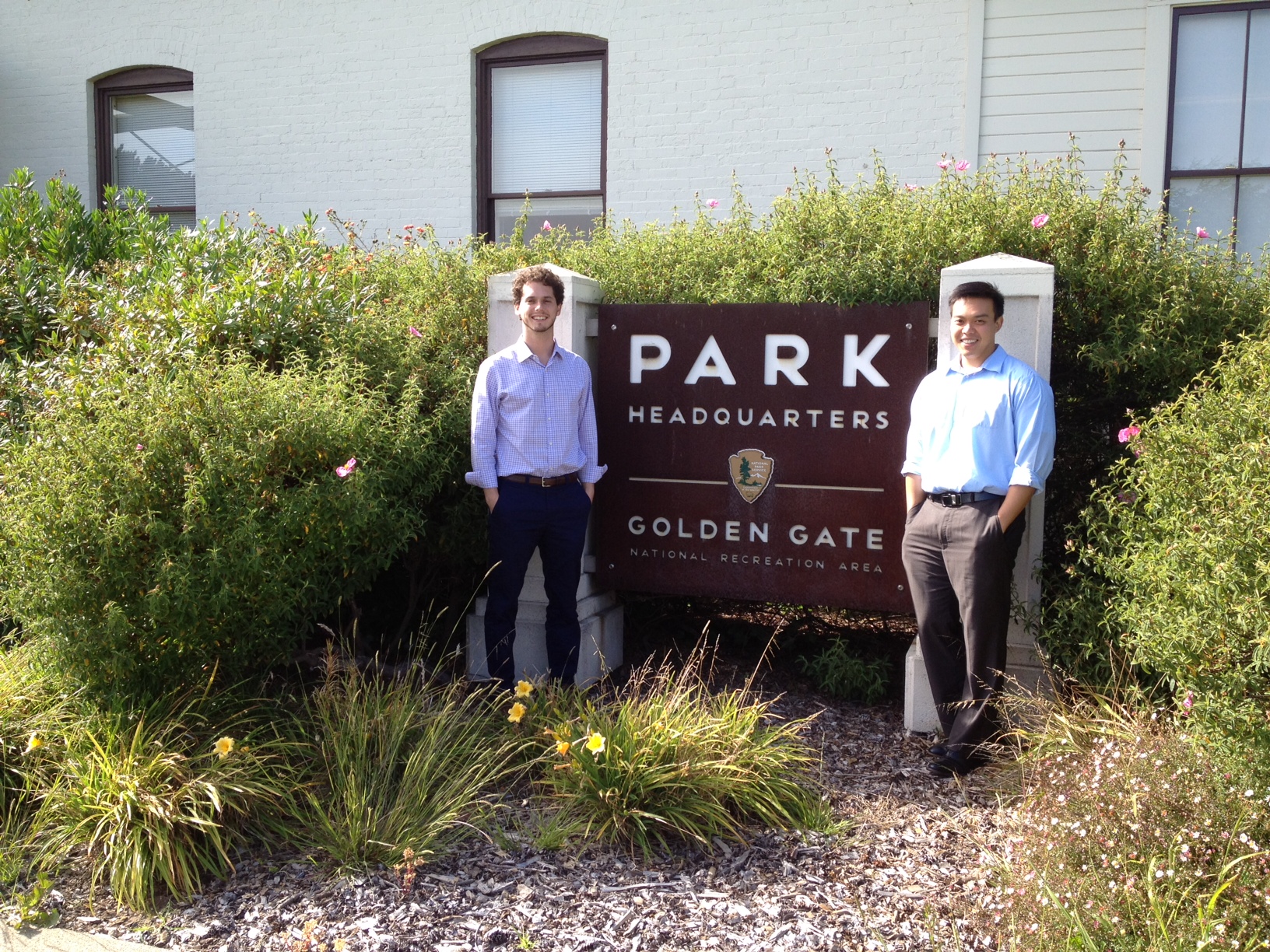Consulting to the National Parks Service

by Robert Frisch, MBA ‘13

Visitor experience is taken very seriously at the National Park Service. Consequently, my role over the summer was to address congestion issues through the management of commercial transportation to an iconic site: Muir Woods National Monument.
When it comes to choosing your MBA summer internship, some advise trying to round out your resume by focusing on your weaknesses. Others say to shoot for a well-known company that will lend you credibility. For me, I knew that I wanted to spend my time doing something that I love and feel passionate about. A position in the realm of sustainable hospitality, land conservation, or eco-tourism was what I was looking for. I had a few interviews for a sustainability position with a hotel real estate investment trust (REIT); talked to an eco-tourism consulting firm based in India; and spoke to a for-profit land conservation company based in Chile. I would have never guessed it, but I ended up accepting a position as a summer consultant to the National Parks Service in San Francisco.
The Golden Gate National Recreation Area (GGNRA) is an urban park that includes many beautiful and famous landmarks in and around San Francisco such as Alcatraz, the Presidio, Ocean Beach, Stinson Beach, and Muir Woods. Visitor experience is taken very seriously at the National Park Service, and congestion issues are starting to become a major problem at the more popular sites. In particular, Muir Woods has had a long history of crowding and traffic problems, as it is a stunning example of an old-growth redwood forest within a half-hour of the city. I was brought in to analyze how the GGNRA can better manage the commercial tour operator market that serves Muir Woods.

I knew that I had hit the mark as far as my career interests were concerned when I read a small placard in my new office the first day of work that quoted the first director of the National Parks Service, Stephen T. Mather:
“Scenery is a hollow enjoyment to the tourist who sets out in the morning after an indigestible breakfast and a fitful night’s sleep on an impossible bed.””
In order to provide the necessary commercial services within the parks, the NPS relies on a number of legal instruments that allow private companies to operate hotels, transportation services, guided tours, or gift shops. Commercial use authorizations, concession contracts, leases, or special use permits all provide different degrees of oversight and regulations on how these companies can operate in the park.
Currently, there are 34 companies that hold “commercial use authorizations” that allow them to bring busloads of visitors to Muir Woods. The businesses are not subjected to any kind of scheduling system, nor are they required to provide any particular information about the park. The lack of regulation has resulted in overly crowded peak hours, unsafe road conditions, and inconsistent visitor experiences. Would limiting the number of “commercial use authorizations” help the situation? Would switching to a “concessions” model be a better idea – and could a concessions contract generate a significant amount of additional revenue for the park? How would the industry react to a change in the management system? How have other parks dealt with similar problems?
With my newly acquired skills in operations and financial modeling, coupled with my growing experience with the consulting process, I jumped headfirst into the project. A normal day at the office involved biking 7 miles from my government-provided housing in the Marin Headlands over the Golden Gate Bridge to the GGNRA headquarters in Fort Mason. Then I might have a few calls with other National Parks like Yosemite or Acadia to learn how they manage their transportation issues. In the afternoon I may go meet the group of landscape architects who have been re-designing the entry plaza and parking lot in Muir Woods, and weigh in on the new bus-unloading areas. I also had the chance once or twice a week to travel to Muir Woods and talk to the park staff on the ground there. Finally, I ended each day by braving the July fog once again and biking back over the bridge to my house.
The last week of my internship, I presented my findings to senior management. Using the consulting skills that I learned in the Sustainable Global Enterprise (SGE) immersion, I was sure to back-up my recommendations with the data I had gathered throughout the summer. I was also confident enough to make a few provocative suggestions that sparked the interest and imagination of park management. I hope to see some of my recommendations implemented in Muir Woods in the near future, and would be very proud to know that I played even a small part in improving the visitor experience at such magical place.
